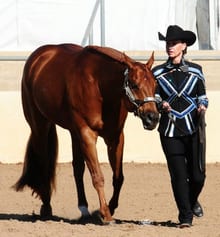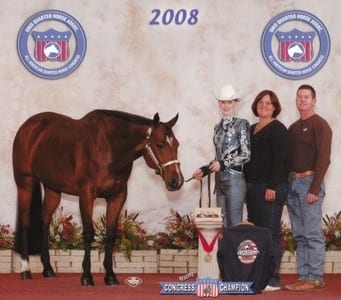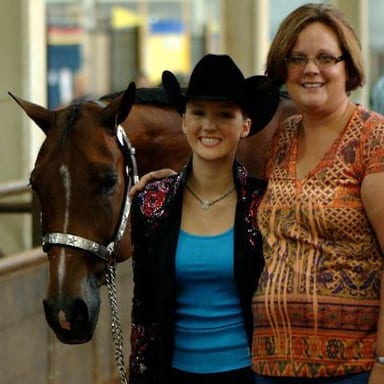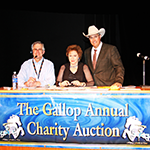World
Champion trainer Jill Briggs of Pilot Point, Texas has been involved with
horses the majority of her life. Jill and her husband, John, have developed a
reputation for success with currently over twenty clients. This husband and
wife team have trained a total of 61 World and Congress Championships with
Showmanship being one of the classes their clients have achieved a very high
level of success. They have prepared AQHA World Showmanship Champions Elizabeth
Borders, Cheyenne Peterson, and Anne Wilson as well as Amateur 2010 Congress
Showmanship Champion Angela Fox.
GoHorseShow
sat down with Jill and discussed at length how she prepares her clients for the
Showmanship at the big shows. Jill has given some amazing detailed and
concrete exercises and tips of how to improve your showmanship skills!
Speed of Maneuvers—Jill acknowledges that she used to
think that faster was better, but, now, she thinks that lightness and responsiveness
the horse has to their human partner is more important. “I really think
this class has become an art form, and the challenging patterns are a lot of
fun to coach and lay out. We don’t school patterns all the time. Sometimes, we
set some markers in a square and have our clients do different speeds of
maneuvers to practice having the horse speed up and slow down with their
partner.”
 Hesitations—Slight hesitations between the maneuvers
Hesitations—Slight hesitations between the maneuvers
so the judge can see that you have finished each maneuver correctly is
appropriate in the Showmanship. The competitor shouldn’t stop and wait between
each maneuver, but, they need to make sure they complete the current maneuver
before they move on to the next one. Briggs compares it to the Reining where
the rider is penalized when they under or overspin—same as in the Showmanship
if they undershoot or overshoot their intentional stopping spot.
Set Up for Inspection–According
to Jill, a plus 1 set up is where the showman can get their horse to set up
square in one or two steps. A person that can get their horse to set up in one
or two steps but it is not perfect, could possibly get a 1/2 plus on that
maneuver. “Anymore than three or four steps during a set up at a big show
shouldn’t be at the top of any judge’s card.” She also teaches her clients
the Quarter Method and that is the current standard of how individuals should
cross over during the inspection.
Pivots-–The
competitor needs to keep the horse straight during their pivot and people also
need to realize that on the longer turn maneuvers that the horse can pick up
their foot and place it back down–that is not considered moving a pivot foot.
“Some horse’s can’t twist that far around and need to pick up their foot
in order to keep going. Competitors should not be penalized when their horse
has to readjust their foot.”
Walking and Trotting— The exhibitor needs to keep their head, shoulders, and arms
still but move their legs in a normal manner. Jill says she watches some of her
clients run without their horses. She has them run with two cups of water, and
they try to keep from spilling it. She wants them to practice being light and
fluid with their movements. Jill compares this class to
horsemanship–where they need to have slight minimal cues and a good body
position that it not too loose or too stiff. “I also don’t like to see a
showman pulling their horse’s head down constantly when they are walking and trotting.”
Backup Maneuver––The
back up needs to be light and even and the horse’s top line needs to be steady.
“I am not a fan of a horse that squats and runs backward. It is also a
higher degree of difficulty if the exhibitor does not move their hand or uses
light contact and minimal cues when asking the horse to back,” Jill
explains. “I like to see the horse really tuned into their partner’s
body.” Also, it is important not to stand right in front of your horse to
get it to back up for safety reasons. Also, the rulebook specifically states
that the competitor should be penalized for standing straight in front.
“People do that because it is a lot easier to back your horse straight
when you are right in front–the exhibitor needs to learn to back their horse
slightly to the side. Everyone needs to read the rulebook and make sure they
know what is expected in their class. Also, someone who overuses cues—shhh’s
their horse when they back up, clucking constantly and saying “whoa”
really loud is one of my pet peeves and in my opinion does not show a polished
and refined showmanship exhibitor that is able to complete their pattern in a
finessed manner.”
 Appropriate Attire–Whatever outfit you decide—“It must be neat, neat neat!” Jill tells GoHorseShow. The outfit needs to fit the horse and exhibitor and blend well together. She says it is not a must to have a white hat in the Showmanship these days. She says that colored hats and darker creamed colored hats are popular now. She is not a fan of fringe, two toned outfits, or stones on the pants or hats in the class. “I don’t like pants that are a different color than the jacket because it tends to make the exhibitor look wider than they really are–I am a big fan of black. There is nothing better than custom made jacket and pants that coordinate perfectly with a clean and blocked hat. I try to work closely with my clients to come up with the perfect outfit that brings out their best qualities.”
Appropriate Attire–Whatever outfit you decide—“It must be neat, neat neat!” Jill tells GoHorseShow. The outfit needs to fit the horse and exhibitor and blend well together. She says it is not a must to have a white hat in the Showmanship these days. She says that colored hats and darker creamed colored hats are popular now. She is not a fan of fringe, two toned outfits, or stones on the pants or hats in the class. “I don’t like pants that are a different color than the jacket because it tends to make the exhibitor look wider than they really are–I am a big fan of black. There is nothing better than custom made jacket and pants that coordinate perfectly with a clean and blocked hat. I try to work closely with my clients to come up with the perfect outfit that brings out their best qualities.”
Manners––Some horses have a habit of pinning their ears during the class but Briggs says that she tries to get them to break the habit by petting them and giving them treats when they practice at home. “I would hope the judge would overlook a horse that is pinning their ears if the exhibitor does an excellent job and the horse doesn’t look intimidated or sour. Some horses just tend to do that regardless of how much we try to break that habit. I think the judges should use the pinned ears as a tie-breaker between two exhibitors that are very close in their pattern and quality of execution.” (Photo © Jeff Kirkbride)
Body Condition of Horse—Briggs emphasizes that a horse that is too thin always looks the worse in the Showmanship and that everything needs to be done to try and fatten them up. She also uses clear polish on sorrels and chestnuts because she doesn’t think black polish looks very good with that coat color. She also likes to see white socks clipped and powdered.
[NPI
Float=”left”]/Media/4/jpg/2011/7/4498ee44-a2e9-c79a-de079b17dd2668e1.jpg[/NPI]Handling Pressure—Jill also has her youth and amateurs
prepare their own horses so they can bond with their horses and know their
moods and how to handle specific situations. “In any pattern, we always
try to find the good with the bad. We always ask our customers to tell us what
they did good in a particular pattern, and also set goals of what to do better
next time. In order to keep them from getting in a rut, we always set short
term goals for each client to reach. I also sometimes have them write down
their goals and also what worked a particular day.”
Every
exhibitor also needs to have a plan. They need to study and know their pattern
and have fun practicing and not pressure themselves to a point where they make
themselves miserable. “At the big shows, you need some alone time with
just you and your horse.”
Concluding Thoughts–Briggs believes that this
class is very hard for some people. The people with more outgoing personalities
and those who like attention seem to enjoy this class. The more shy and
withdrawn exhibitors have a harder time. “Sometimes we have to push our
clients to open up and become better showman in this class which in turn helps
them in all of their other classes.”
Briggs
points out that confidence is the key. “I can always tell when someone is
not confident with their abilities, their outfit, or their horse’s condition.
Exhibitors need to practice, be prepared, and make sure they are happy with
their overall appearance and abilities before they go into the ring.” Jill
adds, “I think this is a neat class where everyone can have their own
unique style. The same person doesn’t win all the time and someone else can
step up and rise to the occasion that particular day.”
Photos © Jeff Kirkbride









